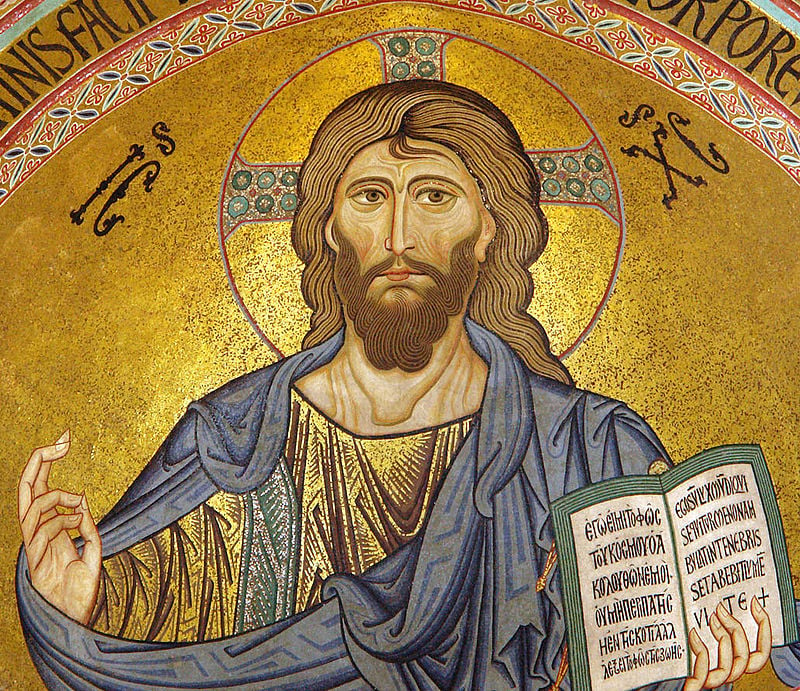A number of prominent Bible scholars believe that Richard Bauckham’s book Jesus and the Eyewitnesses just might be the most important book of New Testament scholarship in many decades–the kind of paradigm-shifting work that will be ignored by most current scholars and only taken up by a new generation, as science advances “one funeral at a time”.
In a word, the book argues that the Gospels are books of oral history; in other words, that they are based on the direct accounts of specific, named eyewitnesses to the life and ministry of Jesus. This is contrary to the assumption of most New Testament scholarship, drawn from the form criticism of the early 20th century, that the Gospels are works of oral tradition, in other words collections of anonymous traditions passed down through many iterations between the actual witnesses and the writers of the Gospels.
This is a heavy tome of scholarship, not for the faint of heart, and many readers will find it hard not to skip a few pages. Bauckham digs deep into the evidence. Sometimes an argument turns on a specific phrase which has (Bauckham argues) been widely misinterpreted, and so Bauckham will spend many pages on the meaning of one or two Greek words to dispatch the many opposing arguments and get the sense just right.
Bauckham adduces several pieces of evidence for his central claim.
One of them is the work of Papias, an early Christian, whose work we only have fragments of, but through whose work we can see that the Christians of the generation after Christ placed great value, not on generic, anonymous, Jesus “traditions”, but on the testimony of specific, named eyewitnesses. (Papias’ testimony was once written off, and then overlooked, by most Biblical scholars but, Bauckham argues, this is based on a misunderstanding. Papias wrote too late to have met and questioned the eyewitnesses that he says he did, and therefore is not credible, the argument goes. But, Bauckham argues very convincingly from internal and external evidence, this is just a misreading: Papias is writing as an old man of what he did when he was young, which is perfectly credible.)
Another is the use by the Gospels of literary devices such as the inclusio, an account of witnesses at the beginning and end of the Gospel to signify that the testimonies of these key witnesses is, so to speak, weaved through the entire Gospel, and the importance of naming specific disciples and witnesses as having been there “from the beginning,” which is a commonplace or catch-phrase of best-practice ancient historiography.
Another piece of evidence is statistical: thanks to grave inscriptions and administrative records, we know a lot of things about what names people had in ancient Palestine, and it turns out that the statistical distribution of names in the Gospels matches up with the statistical distribution of names in Palestine overall, which wouldn’t be the case if, as many Biblical scholars have assumed, names attached to specific stories in the Gospel were basically made up out of thin air to add color to anonymous tradition stories; to the contrary, it makes very credible the suggestion that those names belong to actual existing, specific people, who are the sources for the stories attached to them (as some have noted, there’s about five zillion “Marys” in the Gospels, who are sometimes hard to tell apart, which would be awful if you were making up a story, but matches up if they are the actual people in a country where Mary was a very common girl’s name).
Another is the significance of named secondary characters in the Gospels: the Gospels focus on a small number of key figures (Jesus, the Twelve), and so you would expect that most other people in the narrative would be unnamed; and this is indeed the case; which makes it all the more significant that some are named. For Bauckham, this is the Gospel writers specifying that these named characters are the living eyewitnesses from whom the tradition is drawn. So, for example, the reason we know that the little girl Jesus raised from the dead was “the daughter of Jairus” is because Jairus himself is the eyewitness source of the story; presumably, Jairus joined the Christian movement, and then told his story (and was frequently asked to tell his story) within the Christian movement, and very naturally became an eyewitness source when it came time to write down the Gospels.
Beyond individual arguments, what makes Bauckham’s thesis extremely compelling is the intrinsic plausibility meta-story into which they fit. As Bauckham recounts, the meta-story that the early 20th century form critics of the Gospel told (most often implicitly, as is the case with meta-stories) and their key assumption was that the Gospels were works of oral tradition, meaning anonymous stories passed down and through the community, and going through iterations and improvisations and changes as they do so, through various changes, until they end up being written down into the Gospels. And as Bauckham notes, even as more recent Biblical scholarship has dismissed most of the actual findings of the form critics, it has never really stopped taking for granted this assumption that those findings were based on. And even the form critics themselves never really, at least coherently and thoroughly, argued for this view–it was the axiom they used as the starting point for their work. For example, one of the key assumptions of the form critics was that Jesus-stories were modified or even made up by the Gospel writers in response to later controversies within the Church; but as N.T. Wright and others have noted, we actually know from Paul’s earlier letters what the controversies within the Church were (whatever we make of Paul’s take and “spin” on them), and the Jesus of the Gospels actually never addresses them, which in itself is striking. Another key assumption of the form critics was that the Christians of the first century did not really care that much about what the historical person of Jesus did or said because they were all about the “spiritual” Jesus that they experienced mystically, and the Gospels was really the product of this mystical experience, only tangentially related to historical events. The form critics never really argued for this view but took it for granted, and Bauckham marshals considerable evidence, both external and internal, that, as one would expect, actually, the Christians who worshipped Jesus really did care a lot about what he actually did and said. Finally, what makes the “oral tradition” model for the Gospel not credible is that “oral traditions” develop over many generations, precisely when there are no longer any living eyewitnesses (if there were any) to what the tradition describes; but it is precisely the case that the Gospels were written in the generation following Jesus, when eyewitnesses were still alive. A lot is frequently made of how “late” the Gospels were written after the life of Jesus; a first answer is that compared to many other works of ancient history that contemporary historians find credible, they really weren’t written very late; but the second answer is that it’s just not true: they were written in the generation following Jesus, and one very credible reason for their being written at the time when they were written was that the eyewitnesses were getting old and the evangelists wanted to preserve their testimony for future generations.
In a way, it’s amazing that this actually needs to be said, and this is why Bauckham is so useful. The meta-story he puts forward is much more compelling. And even though he’s too careful a scholar to put it this way, it’s just common sense. And it’s that the earliest Christian community, which worshipped Jesus–very naturally–actually cared a very great deal about the specific events and sayings of his life. That in the earliest Christian community, specific witnesses (particularly the Twelve but not only them) were known and recognized and told their stories, and were asked by other Christians (very naturally) to tell their stories, and that these stories were particularly valued precisely because they were told by the eyewitnesses who had lived through them. And finally, that the Gospels conformed to, or at the very least were aware of, and aspired to, and consciously modeled themselves after, the best-practice historiography of the Ancient world. In Ancient historiography, history was contemporary history. The best historian was the one who had actually participated in the events he recounted, because that made him a key “inside source”; failing that, the second-best source is living eyewitnesses of the events whom the historian interrogates to get the true story. And Bauckham marshals considerable evidence to say that the Gospels, either explicitly (as in the Prologue of Luke) or implicitly, claim and self-consciously model that best-practice. In other words, the Gospels are not the product of oral tradition, they are the product of oral history.
This is Bauckham’s most valuable contribution. The meta-story of the form critics, even as most of their findings have been discredited, was never really questioned, and has been taken for granted by most biblical scholars, even though nobody really thought too much about it, and even though it doesn’t really make any sense on close scrutiny. By contrast, Bauckham’s meta-story is extremely compelling. It just makes sense that early Christians would care a great deal about the events of Jesus’ life. It makes sense that living eyewitnesses to Jesus’ life would be known within the Christian community and that, once it came time to write down the events of Jesus’ life, they would be privileged sources. It makes sense that as they did so, the evangelists would look to the best practice of the historiography of their culture as a guide for how to go about doing it.
As Bauckham writes, finally, looking at the Gospels under the category of testimony brings together the “Jesus of History” and the “Jesus of Faith.” It is because of the testimony of the Gospel that we Christians believe in Jesus. And it is by looking at the Gospels as testimony that historians can actually do justice to these important pieces of evidence we call the Gospels, and do justice to their craft (which, of course, does not entail taking this testimony uncritically).
That, in a nutshell, is the overall argument of Jesus and the Eyewitnesses. At least I hope I’ve done justice to it. But within this overall argument, Bauckham makes a lot of fascinating arguments about the specific Gospels that I think merit discussion.
Mark as Peter’s Gospel. One of the most interesting of Bauckham’s findings is the idea that the Gospel of Mark as we know it is basically based on Peter’s testimony. He adduces this from evidence both external (the earliest Christians, particularly but not only Papias, understood this) and internal (the inclusio of Peter and other elements). In Bauckham’s telling, and he makes the case very eloquently and convincingly, what happened is that Peter and Mark essentially sat down to write the Gospel together, based on Peter’s memories and preaching, with Mark wielding the pen because his Greek was better than Peter’s. Bauckham spends time on Mark’s Passion narrative, since we know that Peter wasn’t there for the Passion, and makes a very good case that the Passion narrative is based on the testimony of eyewitnesses who aren’t named to grant them “protective anonymity” in the volatile political context of the time, which is why these witnesses are named in Matthew and Luke, when this anonymity is no longer required after the Fall of Jerusalem.
The Twelve As Guardians Of The Synoptic Tradition. Another important Bauckham finding is that the Twelve were essentially the guardians of the eyewitness accounts of Jesus’ life in the early Church, and that the three Synoptic Gospels were essentially and mostly based on the testimony of the Twelve. In the early Church, the Twelve, both because of their authority over the Church and because they had been key eyewitnesses of the events of Jesus’ life, were the tradents and guarantors of testimony about Jesus’ life, alongside the other eyewitnesses. And Jesus traditions didn’t essentially float along the ether, anonymously, but rather, both the community itself and the Twelve, informally but in a real sense, policed the traditions, distinguishing what came from actual eyewitnesses and later invention and myth-making. Bauckham doesn’t draw this out, but it seems to me that what this works out as is that the “Q source” is not a written document, but the testimony of the Twelve themselves; or, more precisely, that “Mark+Q” material is really (in outline) the testimony of the Twelve, with the Markan material being more specifically Petrine. And, by implication, material specific to Matthew and Luke came from the specific eyewitnesses that each of the evangelists sought out and interviewed, but those eyewitnesses were Christians in good standing with the Twelve and the community.
The Fourth Gospel. Which leaves us with the Fourth Gospel (since so many scholars don’t even want to call it “John’s Gospel”). Many scholars essentially treat the Fourth Gospel as fan fiction, owing to its later date and strongly symbolic and theological undercurrent. There is also the canard that John has a “high Christology” in contrast to the “low Christology” of the Synoptics, under the assumption that “high Christology” is an invention of later Christians; actually, as N.T. Wright and a great many others have shown, the Synoptics’ Christology is every bit as “high” as anything, albeit expressed in different terms than John (as is Paul’s, which is even earlier, and itself based on creedal statements which are themselves even earlier). Personally, I never bought this. I can’t quite put my finger on it, but John has always seemed to me to have such a density of what I’ll only call authorial cachet that it seemed impossible to me to be anything but than the work of one author, and almost certainly an author who knew Jesus. Anyhow–Bauckham makes a considerable and exhaustive case that the author of the Fourth Gospel and the Beloved Disciple are indeed one and the same. He identifies this author with John the Elder, long-lived and well-known in Syria and also the author of the three Johannine letters (Bauckham doesn’t tell us what he thinks about Revelation), who was prominent there for having been the Beloved Disciple and the author of the Gospel and for having lived to a very long age; but this John the Elder was not John, the Son of Zebedee, the member of the Twelve. Bauckham argues that the Fourth Gospel is so different from the others precisely because the Synoptics were drawn from the tradition of the Twelve and John the Elder, though a close disciple of Jesus, was not a member of the Twelve. It was only in the third century that this John the Elder was conflated with John, the son of Zebedee, because John the Elder was sometimes referred to as an apostle (though, of course, non-members of the Twelve also were, like Paul and the Seventy). This explains how John and the Synoptics can be very different, and yet both are reliable eyewitness testimony.
A final point, that I really wasn’t looking for going in, is how Catholic this all sounds. Everywhere Bauckham, who is an Evangelical, both argues and takes for granted that Peter was the (not ‘a’) leader of the first-generation Church. And the portrait he paints of the Church of the first generation looks suspiciously like what Catholics say it should/did: with an apostolic college (the Twelve) having authority over the Traditions and over the people, and this apostolic college being headed by a Jesus-appointed chief apostle, Peter. Bauckham goes to great lengths to argue that, unlike what is sometimes thought, John’s Gospel does not denigrate Peter. Peter and the Beloved Disciple are contrasted through the Gospel (most strikingly with Peter’s denial and the Disciple’s presence at the foot of the Cross), but this is not to denigrate it, but rather to highlight their respective vocations, of the Beloved Disciple as a witness to the events of the Gospel, and of Peter as the under-shepherd of Christ’s flock. It also sounds like the early Christians weren’t overeager to write down Scripture: they clearly viewed the Gospel as something primarily oral, although certainly to be supported by written material, and they “got around” to writing the Gospels only when the witnesses were getting old (Peter writing before that because he could get killed at any moment).
It’s kind of striking that the historical framework that makes the most sense of the historical evidence we have about the New Testament also matches up really well with Catholic ecclesiology.
In any case–not everyone needs to read this quite dense and scholarly work, but they should certainly familiarize themselves with its points, because I believe it gives us the best historical and conceptual framework for understanding the history in the Gospels.












